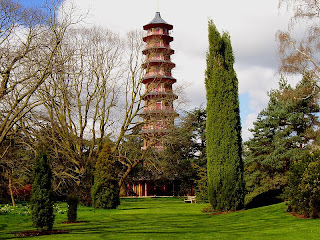One of the most famous landscaped areas in the world is the Kew Gardens in London. Landscapers from all over the world look to the Kew Gardens for inspiration and in admiration.
Kew Gardens originated in the exotic garden at Kew Park formed by Lord Capel John of Tewkesbury. It was enlarged and extended by Augusta, Dowager Princess of Wales, the widow of Frederick, Prince of Wales, for whom Sir William Chambers built several garden structures. George III enriched the gardens, aided by William Aiton and Sir Joseph Banks.
The Kew herbarium is one of the largest in the world, housing approximately 7 million specimens. The herbarium represents plant types from all parts of the globe, especially the tropics.
Kew provides advice and guidance to police forces around the world where plant material may provide important clues or evidence in cases. In one famous case, the forensic science department at Kew was able to ascertain that the contents of the stomach of a headless corpse found in the river Thames contained a highly toxic African bean.
In the South East corner of Kew Gardens stands the Great Pagoda (by Sir William Chambers), erected in 1762, from a design in imitation of the Chinese Ta. The lowest of the ten octagonal stories is 49 feet (15 m) in diameter. From the base to the highest point is 163 feet (50 m).
Each story finishes with a projecting roof, after the Chinese manner, originally covered with ceramic tiles and adorned with large dragons; a story is still propagated that they were made of gold and were reputedly sold by George IV to settle his debts. The truth is that the dragons were made of wood painted gold, and simply rotted away. The building walls are brick. The staircase, 253 steps, is in the center of the building. The Pagoda was reopened for the summer months of 2006, and is now permanently open to visitors.


No comments:
Post a Comment